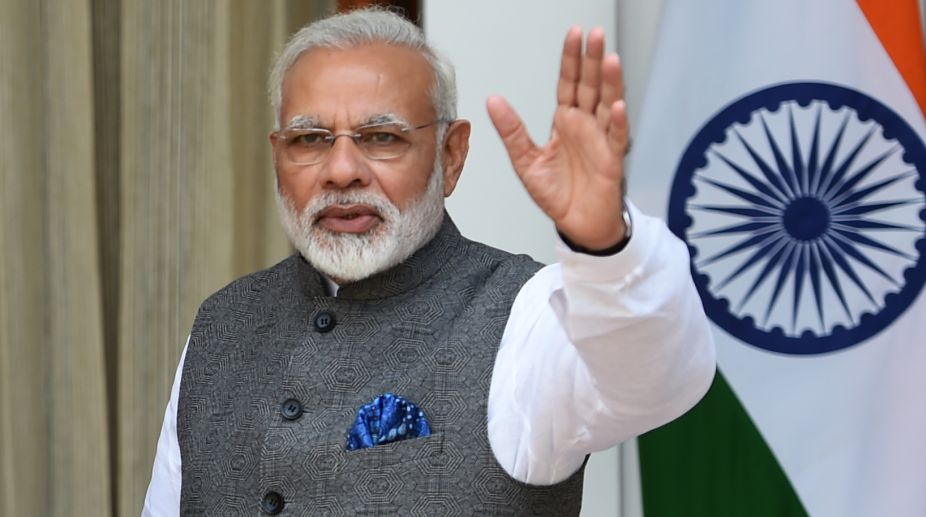Prime Minister Narendra Modi directed officials on Friday to ensure efficient and stringent monitoring of construction of rural roads at a review of key infrastructure sectors including roads, railways and airports.
He also directed the use of new technologies in road construction and asked the government’s think tank Niti Aayog to examine global standards in the application of technology for infrastructure creation, and the feasibility of adopting these in India.
Advertisement
According to an official statement, Modi laid stress on better outcomes for turnaround time of ships and clearance for cargo.
Referring to the coal sector, the prime minister noted the decline in coal imports last year. He called for “even more” vigorous efforts towards coal import substitution and application of new coal technologies, including gasification technology.
In the course of the presentation made by the Niti Aayog CEO, it was noted that remarkable progress has been made in several areas and infrastructure sectors.
In a broad overview of the progress in the road and railways sectors, the prime minister called for a consolidated approach to existing projects, and working towards their completion within strict timeline, the statement said.
The highest-ever average daily construction rate of 130 km has been achieved for rural roads under the Pradhan Mantri Gram Sadak Yojana (PMGSY). This has led to an addition of 47,400 km of PMGSY roads in 2016-17. Around 11,641 additional habitations have been connected with roads in the period, the meeting was informed.
Over 4,000-km rural roads have been constructed using green technology in 2016-2017. The use of non-conventional materials such as waste plastic, cold mix, geo-textiles, fly ash, iron and copper slag is being pushed aggressively, the statement read.
For efficient and stringent monitoring of rural roads construction and their quality, Modi laid stress on the use of space technology in addition to the technologies already being used, such as the Meri Sadak App.
He called for expeditious completion of vital links which will connect the remaining unconnected habitations at the earliest.
In the highways sector, over 26,000-km 4- or 6-lane national highways have been built in the period, and the pace is improving.
In the railways sector, 953-km new lines were laid in 2016-17, as against the target of 400 km. Track electrification of over 2000 km and and gauge conversion of over 1,000 km were achieved in the period. More than 1,500 unmanned level crossings have been eliminated in 2016-17.
Progress of important projects in the road and railways sectors such as the Eastern Peripheral Expressway, Char Dham Project, the Quazigund-Banihal Tunnel, the Chenab railway bridge, and the Jiribam-Imphal project was also reviewed.
In the ports sector, 415 projects under ‘Sagarmala’ have been identified with an investment of Rs eight lakh crore, and projects worth Rs 1.37 lakh crore have been taken up for implementation, the meeting was told.
In the digital infrastructure sector, the prime minister emphasised that the emerging digital connectivity network, which will connect thousands of gram panchayats in the next few months, should be backed up by appropriate governance steps so that it can further empower people in rural areas.









